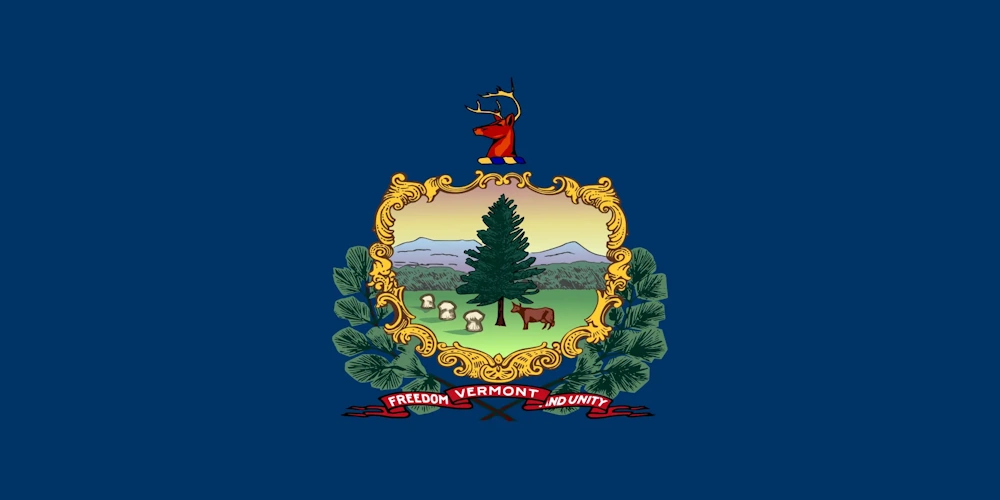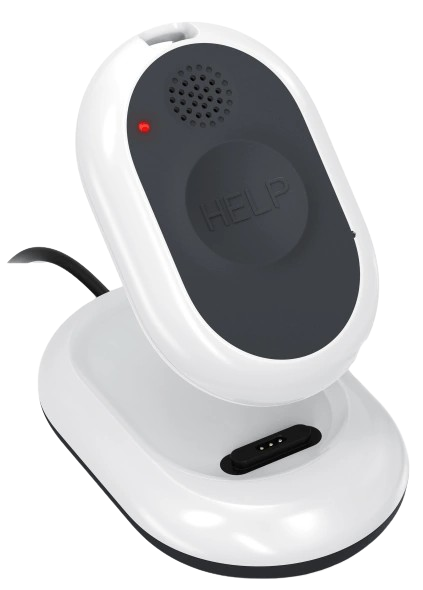Vermont’s economy includes industries such as forestry, agriculture, healthcare, utilities, and public services—many of which rely on lone workers to perform essential tasks. These individuals often operate in rural or isolated areas where immediate assistance isn’t readily available. Whether it's a maintenance worker in a remote town or a healthcare provider making solo home visits, ensuring the safety of lone workers in Vermont is a vital employer responsibility.
Vermont operates its own OSHA-approved state occupational safety and health program through the Vermont Occupational Safety and Health Administration (VOSHA), a division of the Vermont Department of Labor. VOSHA oversees safety compliance for both public- and private-sector workplaces, providing guidance and enforcement based on standards that must be at least as effective as federal OSHA regulations.
On This Page
Our Guide To Lone Worker Safety Policy And Legislation In Vermont
Vermont employers must follow VOSHA regulations, which align closely with federal OSHA standards. While there is currently no state-specific regulation that focuses solely on lone workers, the obligation to provide a safe workplace applies to all employees—including those who work without direct supervision.
Under the General Duty Clause, employers are required to identify and mitigate known hazards. This includes evaluating the specific risks associated with working alone, such as delayed medical response, lack of communication, or exposure to environmental hazards. VOSHA offers training programs and consultation services to assist employers in building effective workplace safety strategies.
How Vermont Defines A Lone Worker
Although VOSHA does not formally define the term "lone worker," the concept is generally understood as an employee who performs their duties without direct supervision and without another coworker present.
Common lone worker roles in Vermont include:
- Home healthcare nurses and aides
- Forestry and logging operators
- Utility and telecom repair technicians
- Agricultural workers
- Janitorial or custodial staff working after hours
- Municipal workers in remote field locations
These roles present unique challenges, making proactive safety planning essential.
Employing A Lone Worker In Vermont
Employers in Vermont should develop and enforce clear protocols for employees who work alone. This includes assessing hazards, equipping workers with proper communication tools, and ensuring they are prepared to respond to emergencies.
Best practices for lone worker safety include:
- Conducting a Thorough Hazard Assessment: Analyze specific risks associated with the task, location, and environment.
- Establishing Communication Procedures: Equip workers with phones, radios, or lone worker safety apps.
- Setting Up Regular Check-Ins: Schedule manual or automated check-ins throughout a worker’s shift.
- Preparing Emergency Response Plans: Train employees on what to do if they encounter a threat, injury, or other emergency.
- Training and Education: Provide job-specific safety training to help lone workers recognize and respond to hazards effectively.
Employers who follow these guidelines help ensure that lone workers remain protected and that organizational policies meet VOSHA expectations.
Learn How You Can Protect Your Employees With Loneworker.com

With Loneworker.com you can be equipped with the knowledge and the means to protect your employees and protect your business. Contact us today to learn more about how Loneworker.com can protect you and your employees.
How The Safe Lone Worker App Can Protect Vermont Lone Workers And Employers
The Safe Lone Worker app offers powerful tools to protect employees working in isolation—especially in Vermont’s rural or weather-challenged regions. Features like real-time GPS tracking, check-in scheduling, emergency panic buttons, and fall detection provide employers with 24/7 visibility and immediate alerts if something goes wrong.
This technology enhances employer readiness and demonstrates a strong commitment to employee safety, while also helping businesses meet VOSHA compliance requirements.
Vermont Lone Worker Policies
Vermont’s workplace safety standards are managed by the Vermont Occupational Safety and Health Administration (VOSHA), under the Vermont Department of Labor. As a state-plan state, Vermont enforces its own safety rules, which apply to both private- and public-sector employers and must meet or exceed the effectiveness of federal OSHA standards.
For the most current safety regulations and support resources, employers should consult the Vermont Department of Labor – VOSHA section. This article serves as a general guide and is not a substitute for official legal advice or regulatory consultation.
Vermont Lone Worker Resources
OHS Contact Centre
- 1-866-415-8690
CDC / NIOSH
- 800-232-4636

Affordable Monitoring For Lone Workers In Vermont

-
 Monitoring Your Employees' Safety
Monitoring Your Employees' Safety
-
 GPS Tracking And Monitoring
GPS Tracking And Monitoring
-
 Man Down Panic Alerts
Man Down Panic Alerts
-
 24/7 Protection Anywhere
24/7 Protection Anywhere
Lone Worker Legislation
Lone Worker Safety Policies And Legislation By State
-
 Alabama State Safety Policies And Legislation
Alabama State Safety Policies And Legislation
-
 Alaska State Safety Policies And Legislation
Alaska State Safety Policies And Legislation
-
 Arizona State Safety Policies And Legislation
Arizona State Safety Policies And Legislation
-
 Arkansas State Safety Policies And Legislation
Arkansas State Safety Policies And Legislation
-
 California State Safety Policies And Legislation
California State Safety Policies And Legislation
-
 Colorado State Safety Policies And Legislation
Colorado State Safety Policies And Legislation
-
 Connecticut State Safety Policies And Legislation
Connecticut State Safety Policies And Legislation
-
 Delaware State Safety Policies And Legislation
Delaware State Safety Policies And Legislation
-
 Florida State Safety Policies And Legislation
Florida State Safety Policies And Legislation
-
 Georgia State Safety Policies And Legislation
Georgia State Safety Policies And Legislation
-
 Hawaii State Safety Policies And Legislation
Hawaii State Safety Policies And Legislation
-
 Idaho State Safety Policies And Legislation
Idaho State Safety Policies And Legislation
-
 Illinois State Safety Policies And Legislation
Illinois State Safety Policies And Legislation
-
 Indiana State Safety Policies And Legislation
Indiana State Safety Policies And Legislation
-
 Iowa State Safety Policies And Legislation
Iowa State Safety Policies And Legislation
-
 Kansas State Safety Policies And Legislation
Kansas State Safety Policies And Legislation
-
 Kentucky State Safety Policies And Legislation
Kentucky State Safety Policies And Legislation
-
 Louisiana State Safety Policies And Legislation
Louisiana State Safety Policies And Legislation
-
 Maine State Safety Policies And Legislation
Maine State Safety Policies And Legislation
-
 Maryland State Safety Policies And Legislation
Maryland State Safety Policies And Legislation
-
 Massachusetts State Safety Policies And Legislation
Massachusetts State Safety Policies And Legislation
-
 Michigan State Safety Policies And Legislation
Michigan State Safety Policies And Legislation
-
 Minnesota State Safety Policies And Legislation
Minnesota State Safety Policies And Legislation
-
 Mississippi State Safety Policies And Legislation
Mississippi State Safety Policies And Legislation
-
 Missouri State Safety Policies And Legislation
Missouri State Safety Policies And Legislation
-
 Montana State Safety Policies And Legislation
Montana State Safety Policies And Legislation
-
 Nebraska State Safety Policies And Legislation
Nebraska State Safety Policies And Legislation
-
 Nevada State Safety Policies And Legislation
Nevada State Safety Policies And Legislation
-
 New Hampshire State Safety Policies And Legislation
New Hampshire State Safety Policies And Legislation
-
 New Jersey State Safety Policies And Legislation
New Jersey State Safety Policies And Legislation
-
 New Mexico State Safety Policies And Legislation
New Mexico State Safety Policies And Legislation
-
 New York State Safety Policies And Legislation
New York State Safety Policies And Legislation
-
 North Carolina State Safety Policies And Legislation
North Carolina State Safety Policies And Legislation
-
 North Dakota State Safety Policies And Legislation
North Dakota State Safety Policies And Legislation
-
 Ohio State Safety Policies And Legislation
Ohio State Safety Policies And Legislation
-
 Oklahoma State Safety Policies And Legislation
Oklahoma State Safety Policies And Legislation
-
 Oregon State Safety Policies And Legislation
Oregon State Safety Policies And Legislation
-
 Pennsylvania State Safety Policies And Legislation
Pennsylvania State Safety Policies And Legislation
-
 Rhode Island State Safety Policies And Legislation
Rhode Island State Safety Policies And Legislation
-
 South Carolina State Safety Policies And Legislation
South Carolina State Safety Policies And Legislation
-
 South Dakota State Safety Policies And Legislation
South Dakota State Safety Policies And Legislation
-
 Tennessee State Safety Policies And Legislation
Tennessee State Safety Policies And Legislation
-
 Texas State Safety Policies And Legislation
Texas State Safety Policies And Legislation
-
 Utah State Safety Policies And Legislation
Utah State Safety Policies And Legislation
-
 Vermont State Safety Policies And Legislation
Vermont State Safety Policies And Legislation
-
 Virginia State Safety Policies And Legislation
Virginia State Safety Policies And Legislation
-
 Washington State Safety Policies And Legislation
Washington State Safety Policies And Legislation
-
 West Virginia State Safety Policies And Legislation
West Virginia State Safety Policies And Legislation
-
 Wisconsin State Safety Policies And Legislation
Wisconsin State Safety Policies And Legislation
-
 Wyoming State Safety Policies And Legislation
Wyoming State Safety Policies And Legislation







